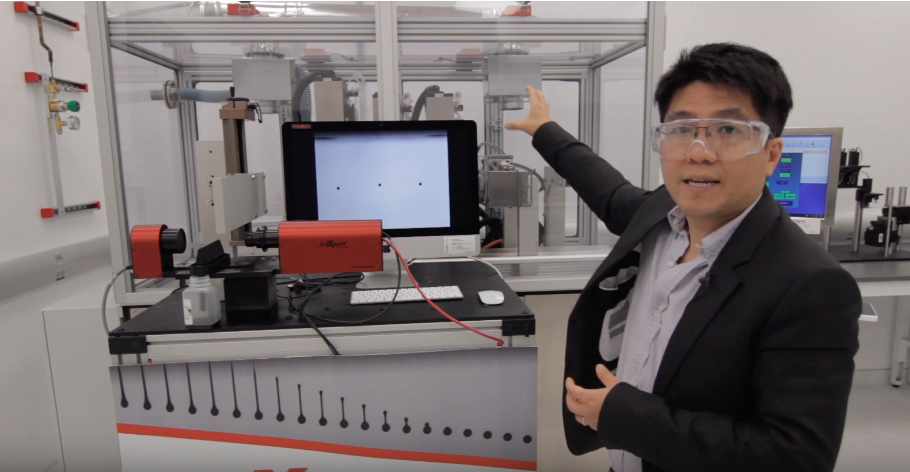Adding on to the myriad of equipment and capabilities of the University of Connecticut’s Tech Park, the UConn National Science Foundation (NSF) SHAP3D site, and its site director, Associate Professor of Chemical Engineering Anson Ma, have acquired a state-of-the-art Pilot Scale industrial inkjet 3D-printer, appropriately named HuskyJet.
The versatile printer has a number of applications, which range from regular 2D graphics on paper, to creating flexible electronics, medicinal tablets, and green parts for ceramics and metals. The printer was funded by UConn’s Academic Plan and has already been leveraged for a number of projects, including a federally funded project from NextFlex – America’s Flexible Hybrid Electronics Manufacturing Innovation Institute – of which UConn is a founding academic member.
In July 2018, UConn, the University of Massachusetts Lowell, and the Georgia Institute of Technology launched a new collaboration named SHAP3D, an NSF-funded Industry-University Cooperative Research Center (IUCRC), in order to address the emerging challenges in the additive manufacturing (also known as 3D printing) process. The SHAP3D center aims to develop critical insight into the fundamental structure-processing-property relationships for the additive manufacturing industry which has exceeded $7.3 billion in 2018 and is expected to top $35.6 billion by 2024, according to a recent report.
The site, run by Ma and Materials Science and Engineering Professor Rainer Hebert, is primarily focused on 3D printing applications for the aerospace, shipbuilding, and biomedical applications—all major industries in the state of Connecticut.
How HuskyJet works is multi-faceted, and can be adjusted for many different parameters, including different inks, substrates and powders, and the strength of the ink stream, using three piezoelectric print heads.
The print job, whether it be for a 2D graphic or a medicinal tablet, is brought along the printer from left to right using a controlled, linear sled system. Near the end of the printing task, the object passes to a section of the printer that uses infrared and ultra-violet rays to perform both high-temperature processing and high-speed drying of the ink and additional solvents. At the very end of the process, the object is placed under a camera in order to review if there has been any printing error during the process.
The HuskyJet printer is also equipped with a drop watcher system, which gives the user the ability to test and measure the droplet volume, velocity, and trajectory of any new ink or substance to achieve optimal printing performance.
For more information on the National Science Foundation SHAP3D center and NextFlex, please visit: https://www.uml.edu/research/shap3d/and https://www.nextflex.us/.



